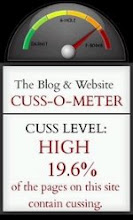
OKLAHOMA CITY - When Silent Cash Dasher, age 16, leaves the starting gate in the 11th race on Sunday night, March 29, he’ll become the oldest Quarter Horse to ever race in the USA and obviously, the oldest horse to ever run at Remington Park.
Owned and trained by Gary Earp of Jay, Okla., jockey Denise Lambeth has been named to ride in the race, an allowance at 250 yards with a purse of $24,000. He has been assigned odds at 15-1 in the morning line for Sunday.
Silent Cash Dasher won here at age 13, in May 2006, becoming the oldest horse to ever win at Remington Park.
The Oklahoma-bred gelding won 3 races at Oklahoma tracks last year at age 15, becoming the oldest quarter horse to ever win a race in the USA. The gelded son of Dash Easy from the Silent Devil mare Barrbom Babe was bred by Carl Kirby.
Silent Cash Dasher boasts career earnings of $155,277 and has won 18 of his 81 career attempts. His racing career began in 1997 and he first competed at Remington Park as a 5-year-old in 1998.
Post time for the first of 11 races on Sunday night at Remington Park is 6:25pm
http://www.horsebackmagazine.com/breakingnews.htm













